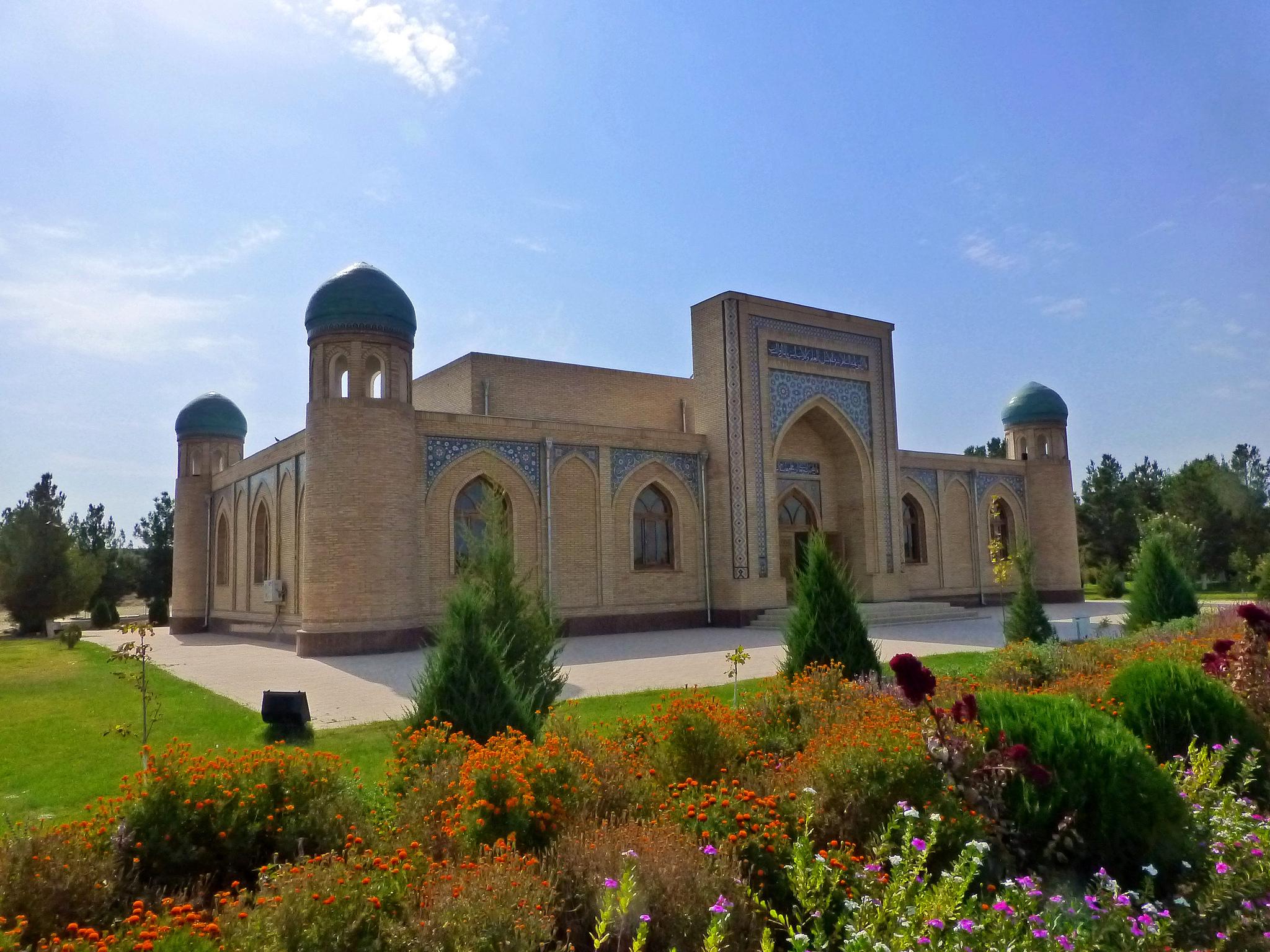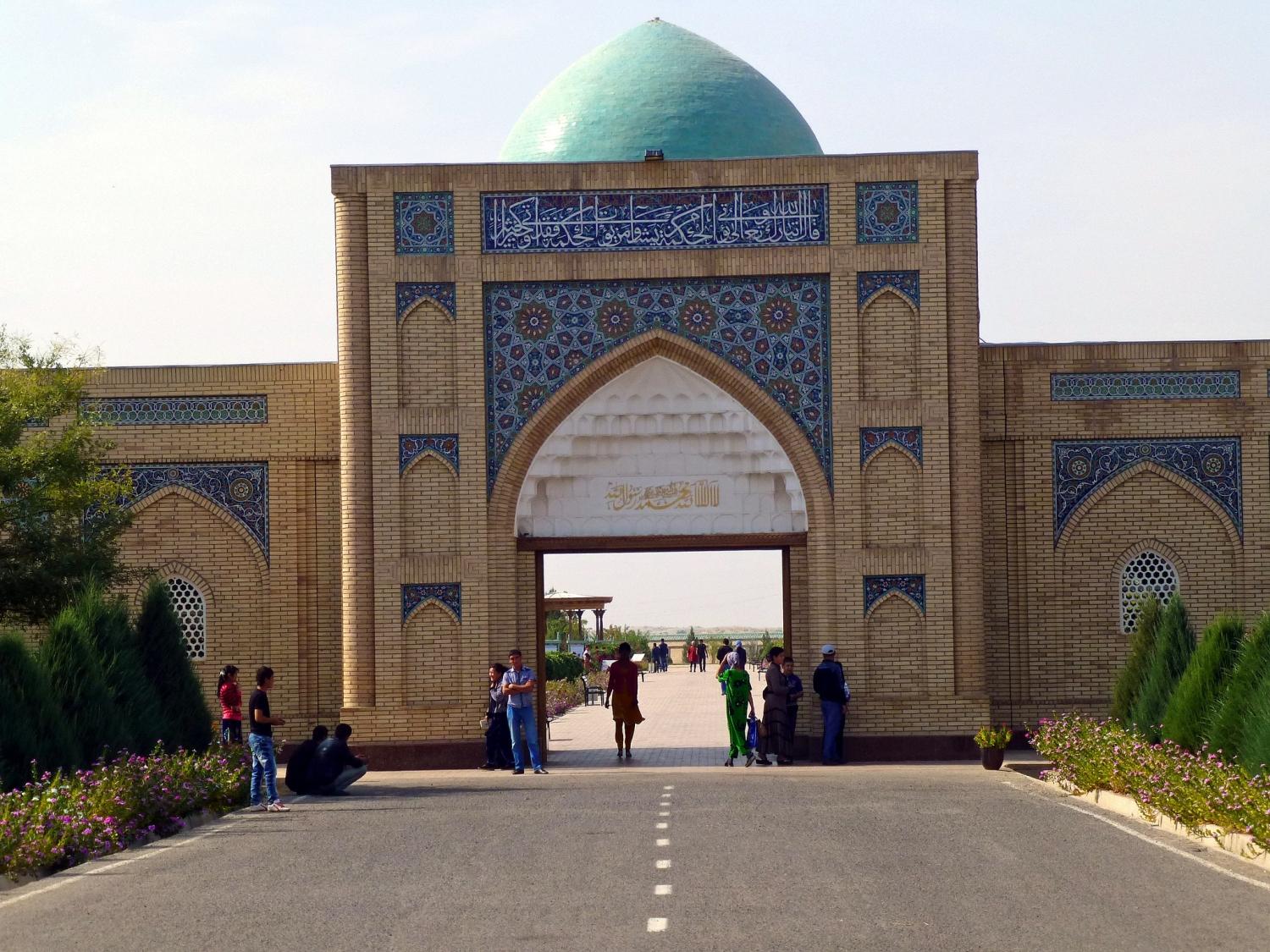



Termez is the capital of Surxondaryo Region in southern Uzbekistan. Administratively, it is a district-level city. Its population is 182,800.
Spring (April - June): The best time to visit Termez is in the spring when the weather is mild and pleasant, with temperatures ranging from 15°C to 25°C (59°F to 77°F). It's an ideal time for outdoor exploration of the city’s ancient ruins and historical sites.
Autumn (September - November): Autumn also offers comfortable temperatures (around 20°C to 30°C or 68°F to 86°F), and the landscape is lush, making it perfect for sightseeing.
Summer (June - August): Termez experiences hot summers, with temperatures often exceeding 35°C (95°F). If visiting during the summer, be prepared for the heat, but it's a good time if you prefer fewer tourists.
Winter (December - February): Winters in Termez are relatively mild compared to other parts of Uzbekistan, with temperatures ranging from 0°C to 10°C (32°F to 50°F). While it’s quieter, some attractions may be less accessible due to weather conditions.
By Air: The Termez International Airport is the easiest way to get to the city. There are domestic flights from Tashkent to Termez, with a flight duration of approximately 1 hour and 30 minutes.
By Train: Termez is connected by rail to Tashkent, which is about 10-12 hours away. Trains are a comfortable way to travel long distances across Uzbekistan, offering scenic views along the way.
By Car/Bus: The drive from Tashkent to Termez takes about 9 to 11 hours, depending on road conditions. You can also opt for shared taxis (marshrutkas) or buses from various major cities.
Fayaz Tepe:
Fayaz Tepe is an ancient Buddhist monastery located on the outskirts of Termez. This archaeological site dates back to the 1st century CE and is one of the most important Buddhist centers in Central Asia. Visitors can explore ruins, Buddhist stupas, and sculptures that showcase the region’s historical significance.
Kirk Kiz Fortress:
The Kirk Kiz is an ancient fortress built by the Persians in the 6th century CE. This sprawling fortress includes several towers and provides panoramic views of the surrounding landscape. It is one of the most recognizable landmarks in the area.
Termez Archaeological Museum:
This museum houses a vast collection of artifacts from the Buddhist, Islamic, and Zoroastrian eras. The museum offers insight into Termez's rich history as a melting pot of cultures.
Sultan Saodat Complex:
The Sultan Saodat Complex is a large religious site that includes a group of mausoleums and a mosque. It is dedicated to a family of saints and is one of the most sacred sites in the region. The architecture and intricate tilework here reflect the best of Islamic design.
Uzbekistan-Afghanistan Border:
Termez is one of the closest Uzbek cities to Afghanistan, and you can visit the Friendship Bridge connecting the two countries. While border access is restricted, seeing the area and the bridge is a poignant experience.
Nisa:
Nisa is an ancient Parthian city located near Termez. The archaeological remains here are important for understanding the rise of the Parthian Empire, and the site offers an opportunity to explore ruins of ancient palaces, temples, and walls.
Mausoleum of Al-Hakim al-Termezi:
Al-Hakim al-Termezi was an important Islamic scholar, and his mausoleum is a significant pilgrimage site. The structure is beautifully adorned with tilework and attracts both worshippers and tourists interested in Islamic culture.
Termez’s Old Bazaar:
The local bazaar offers a traditional Central Asian market experience, where visitors can buy fresh produce, spices, fabrics, and traditional handicrafts. It’s a great place to interact with locals and sample street food.
Explore Ancient Buddhist Sites:
Termez is home to some of the most significant Buddhist archaeological sites in Central Asia, including Fayaz Tepe and Mizdahkan. You can explore these ruins and learn about the city’s importance as a Buddhist hub along the Silk Road.
Visit the Sultan Saodat Complex:
Spend some time exploring the Sultan Saodat Complex, with its impressive mausoleums and beautiful tilework. It's an important part of Termez's religious and cultural history.
Take a Boat Trip on the Amu Darya River:
The Amu Darya River flows through Termez, and there are opportunities to take boat rides along the river. The river offers scenic views of the surrounding landscape and is an ideal way to relax and enjoy the natural beauty of the region.
Walk Through the Termez Archaeological Museum:
Visiting the Termez Archaeological Museum is an excellent way to learn about the city’s Buddhist, Islamic, and Persian past. The museum showcases many artifacts, statues, and tools from the Silk Road era.
Photography of Ancient Sites:
Termez’s blend of ancient ruins, fortresses, and Islamic architecture offers fantastic opportunities for photography. Key spots like Kirk Kiz Fortress, Fayaz Tepe, and the Sultan Saodat Complex are especially photogenic.
Explore the Local Markets:
Termez’s markets offer a chance to try Uzbek street food like shashlik, samsa, and plov. It’s a great way to sample the local cuisine and interact with the friendly locals.
Luxury:
Khusraw Hotel: A comfortable and well-located hotel offering modern amenities, ideal for those looking for a luxurious stay in Termez.
Surkhon Hotel: A 4-star hotel providing excellent service and comfortable rooms, close to major attractions like the Termez Archaeological Museum.
Mid-Range:
Termez Hotel: This hotel offers a good balance of comfort and price, with well-furnished rooms and convenient access to the city’s main sights.
Bactria Hotel: Known for its clean and spacious rooms, this hotel provides a cozy environment for travelers.
Budget:
Local Guesthouses: For a more authentic experience, visitors can opt for local guesthouses, which offer simple but hospitable accommodations at a lower price point.
Homestays: Staying with local families is an excellent way to learn more about the culture and enjoy homemade meals.
Plov (Pilaf): The staple dish of Uzbekistan, plov, made with rice, lamb, and carrots, is a must-try. It’s often cooked in large pots and served with yogurt or salad.
Shashlik: Grilled meat skewers, typically served with flatbread and onions, are a popular street food in Termez.
Samsa: These savory pastries, stuffed with meat or vegetables, are commonly eaten as a snack or appetizer.
Lagman: A noodle dish served with a variety of meats, vegetables, and a flavorful broth.
Manti: Steamed dumplings filled with meat and spices, usually served with sour cream or a tomato sauce.
Top Restaurants:
Sultan Restaurant: Known for serving delicious Uzbek traditional dishes, including plov and shashlik.
Termez Café: Offers a casual dining experience with a variety of Central Asian and Uzbek dishes.
Mizdahkan Café: Situated near the Mizdahkan complex, this restaurant serves a mix of local and international dishes.
Hospitality: Like much of Uzbekistan, Termez is renowned for its warm hospitality. Visitors will often find themselves invited for tea or a meal, a gesture of Uzbek hospitality.
Historical Significance: Termez holds a unique position in history as a place where different cultures, religions, and empires converged. The city’s history as part of the Buddhist, Zoroastrian, and Islamic worlds provides a rich cultural backdrop.
Traditional Crafts: Termez is also known for its textile arts, particularly carpet weaving and silk production, which you can see at local markets and shops.
Music and Dance: Traditional Uzbek music is an important part of the culture, with local performances often taking place during festivals and celebrations.